Language
- Deutsch
- English
- Español
- Français
- Italiano
- Nederlands
- Português
Currency
- AUD Australian Dollar
- CAD Canadian Dollar
- EUR Euro
- GBP Pound Sterling
- SGD Singapore Dollar
- USD US Dollar
- ZAR Rand

why go
Regarded by safari aficionados as one of Africa's greatest wildlife reserves, the 22 750 km² Etosha National Park is one of the easiest, safest and most rewarding big game destinations in Southern Africa. So, where is Etosha National Park? Found in the Kunene region of Namibia, Etosha sits to the northwest of the country, with the closest airport being Windhoek Hosea Kutako International Airport.
The question remains, ‘Why visit Etosha National Park?' Put simply, its luxury accommodation options, exquisitely diverse landscapes, and fascinating desert-adapted wildlife. Not only is it home to unique desert dwellers, but also Africa's iconic Big 5 and delicate ecosystems that house a host of other wildlife and aviary species. With such a kaleidoscope of flora and fauna, Etosha should feature on every photography enthusiasts bucket list.
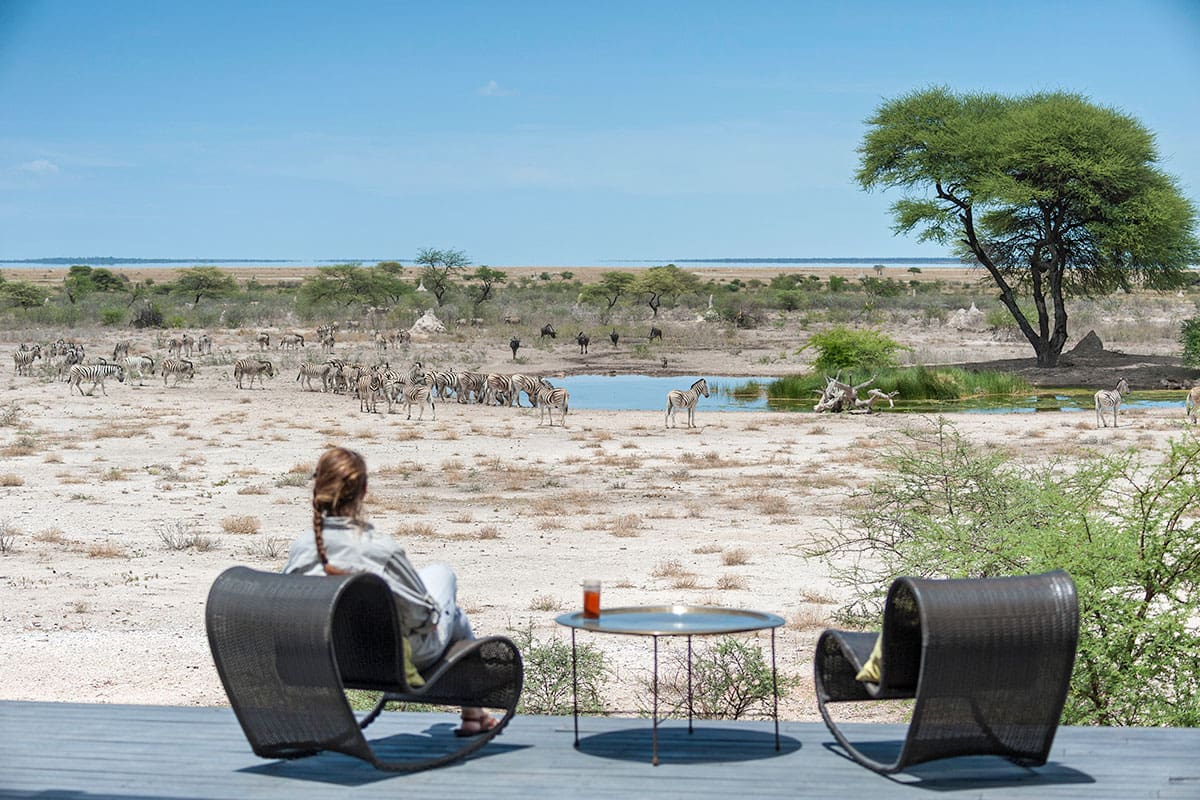
Amongst our most commonly asked questions is “Where is Etosha located?” especially with travellers on a self-drive safari. Found in the northwest of Namibia in a fairly isolated area north of the capital, Windhoek. There are several main routes to look at when travelling to Namibia; Hosea Kutako International Airport, Windhoek's international airport, is the closest to Etosha National Park and is likely the most logical starting point. Direct flights to Windhoek are available from both Johannesburg and Cape Town.
Alternatively, for visitors who may be coming to Etosha as a secondary destination from the likes of Swakopmund or the Skeleton Coast, Walvis Bay Airport may also be a good option to consider. Travellers to Windhoek have the option of a direct flight, a road transfer, or even a self-drive into Etosha. Air Namibia also offers daily flights from Windhoek's Eros Airport to Ondangwa Airport, north of Etosha.
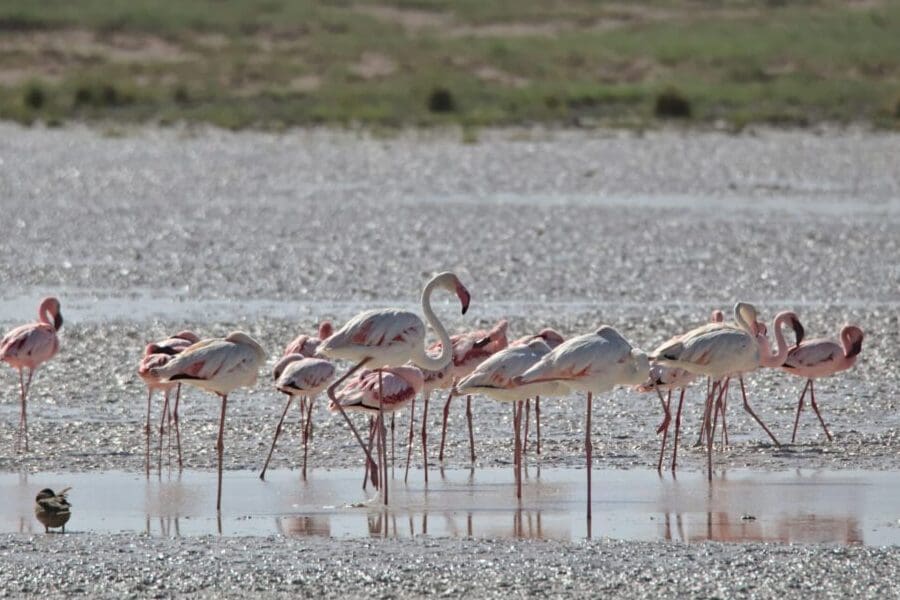
Explore the vast Etosha Pan, a mass natural salt pan believed to have been a large lake once upon a time. Spanning almost a quarter of the park and covering 4,800km sq (2982 miles), the pan's shimmering white glow can be spotted from space. In rainfall season, the area also serves as one of the Etosha water sources, enticing migratory flamingos. Wildlife often spotted in the pan are elephants, lions, giraffes, and various bird species including raptors, storks, and pelicans.
The vast, stark pan provides exceptional photographic opportunities for wildlife as they contrast against the white background. Its edges, where salt crust turns to vegetation, are wonderfully biodiverse with a host of grasses and shrubs that thrive in saline conditions. These grasses attract an abundance of herbivores, which in turn entice a variety of predators.
View Our Travel Advice For Namibia
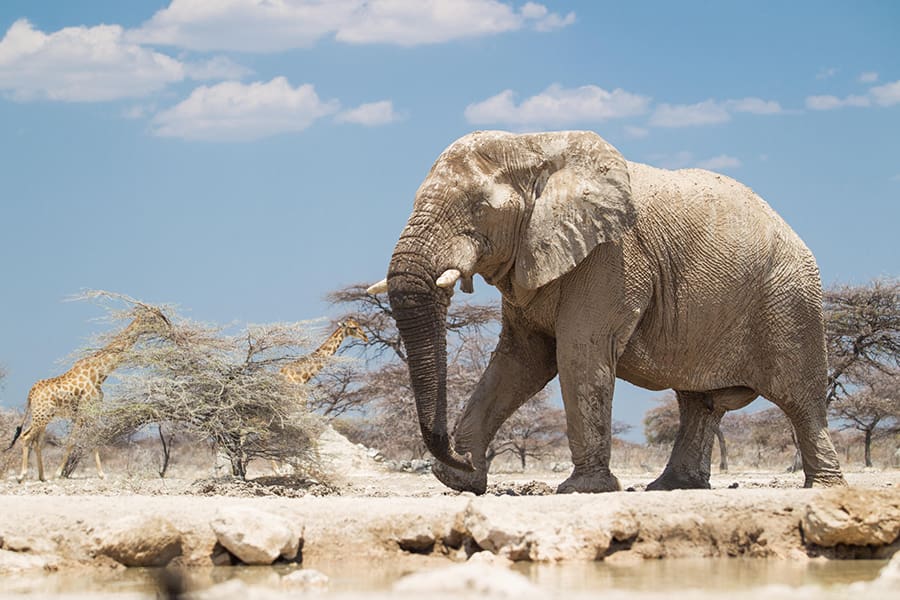
As far as things to do in Etosha National Park go, traversing the park's plains and searching for its wildlife will be at the top of your list. For those dreaming of seeing a black rhino, Etosha is the place to be, not to mention safari staples such as elephants, giraffe, zebra, and wildebeest. Rare species, other than the rhinos, are black-faced impala, Damara dik dik, and roan antelope. Keep an eye out for big cats too, the likes of lions, leopards, and cheetah. A whopping 340 odd species of birds can also be seen so keep an aviary encyclopaedia handy.
Some of the Etosha wildlife have also specially adapted to their environments, including elephants. Their longer legs and large feet enable them to traverse the landscapes more easily and have great knowledge of underground water sources and have adapted to go days without water. Typically, they also have shorter tusks due to fewer available minerals.
Discover Namibian Wildlife
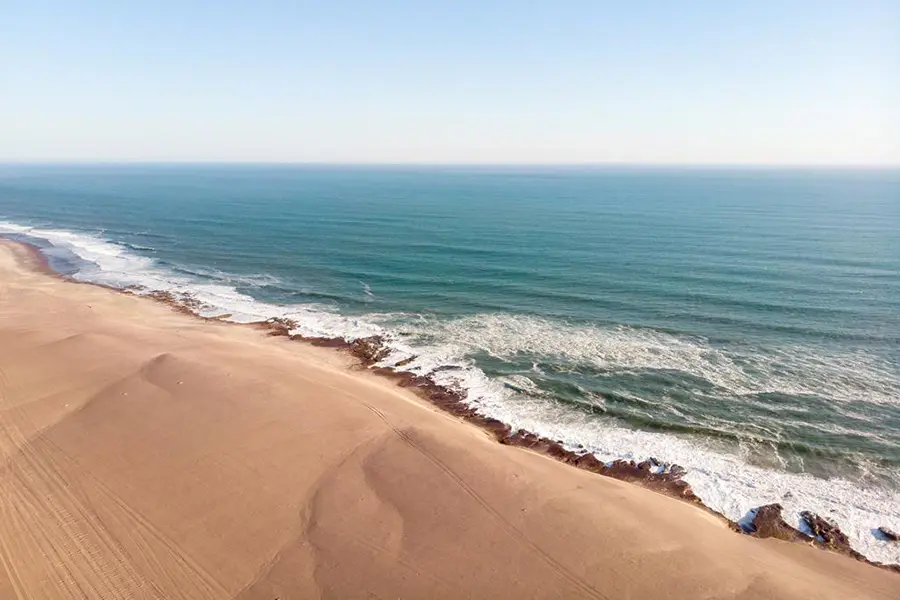
Some of the most easily combined destinations with a visit to Etosha are other Namibian gems or nearby Botswana. Explore the Namib Desert and vast red sand dunes of Sossusvlei or the Petrified Forest and Damaraland. During your desert exploration, stop in at the abandoned Kolmanskop where sand-filled abandoned houses appear to make time stand still and offer hauntingly beautiful photo opportunities. Venture to the Skeleton Coast for the ultimate dichotomous landscapes as waves wash up against the rough sands of the desert.
Bordering Botswana, a trip to Namibia could easily be combined with the likes of the Kgalagadi Transfrontier Park. Travel further north to uncover the secrets of the Okavango Delta and elephant-rich Chobe National Park via Maun. As a 1-hour flight from Windhoek to Maun, Botswana is an ideal combination destination for Namibia with exceptional, unique landscapes and wildlife in each. Alternatively, drop down into South Africa for the likes of lauded Kruger National Park, Sabi Sands, or Cape Town's vibrant cityscapes and beaches.
Discover Namibian Tours & Safaris
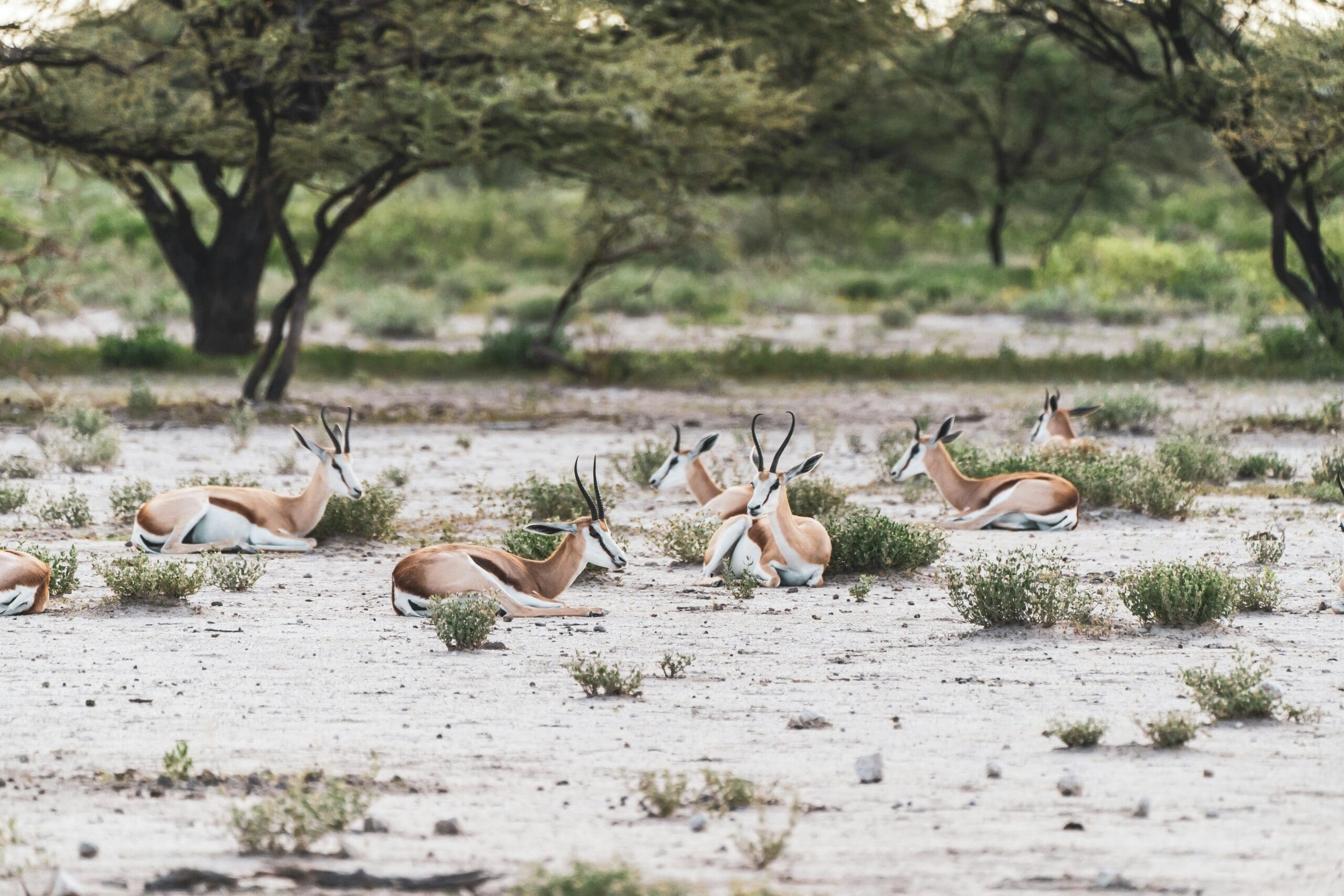
Next to the Etosha Pan is Fischer's Pan, which is often filled with water in the rainy season and offers superlative birdwatching. This area offers great sightings and dramatic photo opportunities. The 30 odd waterholes found south of the Etosha Salt Pan allows for unobstructed close-ups and varying dramatic angles for photography.
To the west of Okaukuejo is The Phantom Forest, consisting of a fascinating collection of Moringa Oleifera trees. Typically found on rocky hillsides, their presence on a sandy plain is inexplicable, yet beautiful. Described by the San people as ‘upside-down trees', they can reach up to 7 metres tall and are often enjoyed be elephants.
Plan Your Perfect Etosha Escape
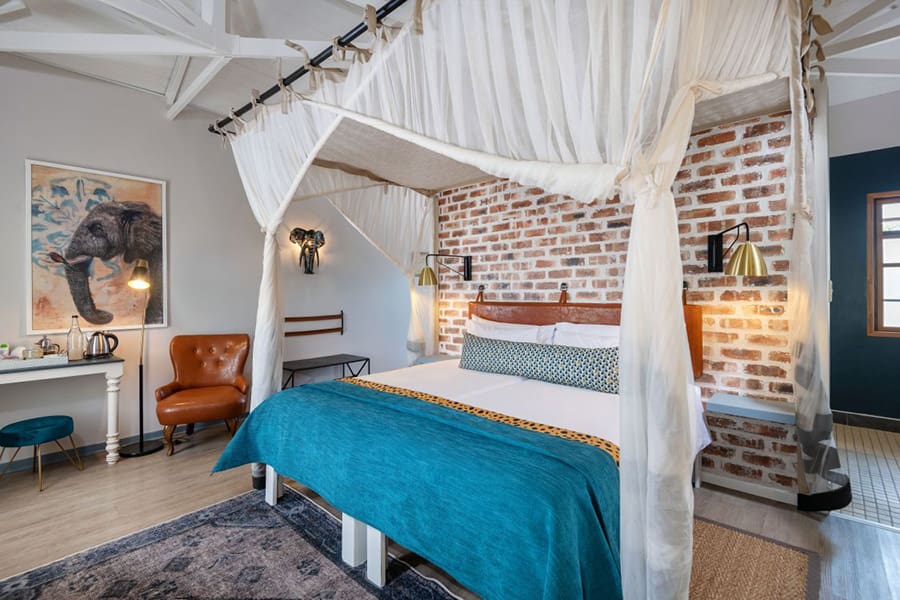
While game drives in Etosha are bound to be a highlight and much of your time will be spent seeking out famed Etosha wildlife, a variety of excellent, luxury accommodation make superb bases for your safari. Spend time experiencing an iconic ‘armchair safari' from the comfort of your lodge, indulging in available spa treatments, and delighting in gourmet dining. Sundowners, stargazing, and fireside boma dinners are the order of your stay. In some cases, guided walks with experienced guides are also offered – an experience not to be missed.
For those who wish to explore, at least in part, by themselves, Etosha lends itself well to self-drives. Whether your activities in Etosha National Park are geared to a more romantic, couple-centric trip or a group trip, the park is also well suited to families. The need for longer drives is largely negated by wildlife convergence around waterholes, with some even visible from your accommodation. Certain camps and lodges even offer child-specific facilities, activities, and even kids' wildlife programmes.
Discover Etosha Accommodation
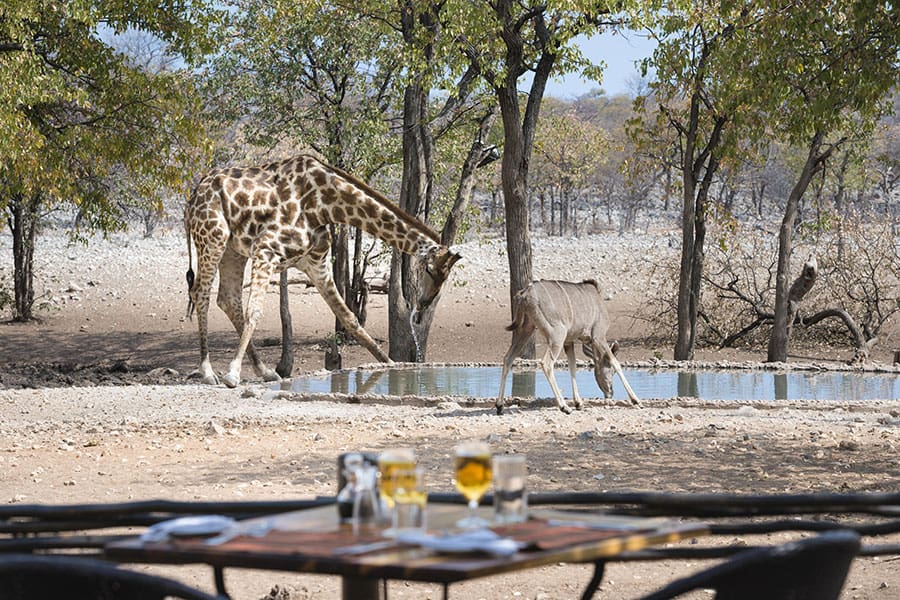
One of the top questions regarding Etosha weather is always “Is there a wet and dry season in Etosha National Park?”. In short, yes but the park is still considered a year-round game viewing destination. Typically, the dry season, May to October, are considered ideal for seeing the greatest amount of wildlife as animals tend to seek out water sources. With drier landscapes and less dense greenery, Etosha wildlife are more visible, but ‘off-peak' season months with vibrant greens make for exceptional, striking photos – especially with the Etosha Pan.
The best time to visit Namibia greatly depends on what you're hoping for in terms of climates and sightings. Peak bird watching takes place in the rainy season from November to March where temperatures range from 18 – 28 degrees Celsius. Conversely, the dry season enjoys temperatures from 20 – 32 degrees Celsius during the day with cooler evenings.
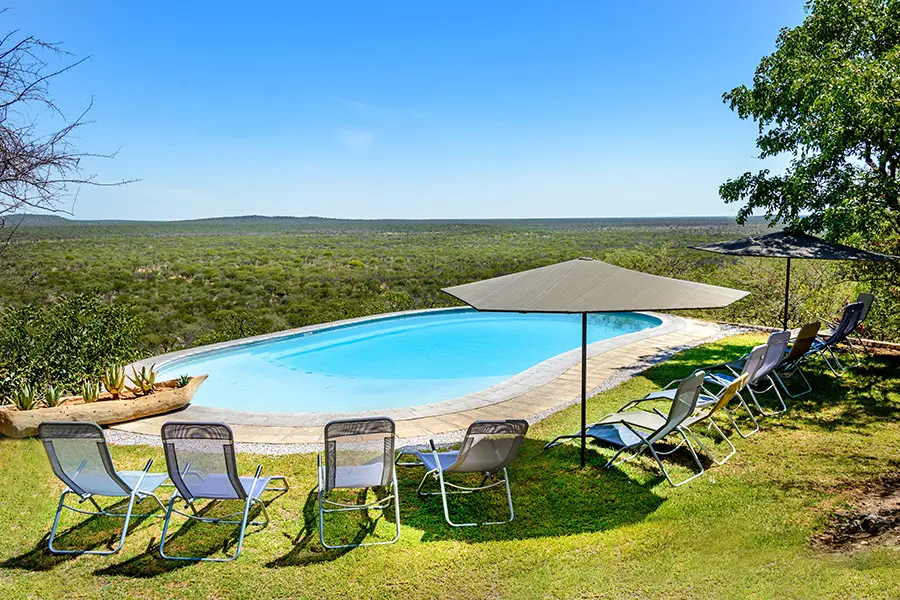
As temperatures can vary from day to night, it's best to pack a variety of clothes – layers are your best friend here. Opt for natural fabrics like cotton and linen where possible in neutral colours. Travel essentials include a warm jacket for cooler mornings and evenings, a hat, and sturdy walking shoes or hiking boots. For a full breakdown, consult our packing guide.
What about Etosha malaria? While Etosha National Park is considered low risk, that is not to say the chance of malaria is zero, particularly when it comes to the rainy season. The best course of action is to take preventative measures such as insect repellent, wearing long-sleeve lightweight shirts where possible and longer socks in the evenings where they tend to be more present. Preventative treatments can be obtained through your doctor prior to travel and consulting them for personalised suggestions is advised if you are concerned. Guides and teams at your chosen accommodation will also be able to offer specific area-based tips.
Speak to one of our Africa Safari Experts about curating the perfect Etosha itinerary and get ready to experience one of Namibia’s premier wildlife destinations:
Help Me PlanBird watching
Scenery
Self-drive
Wildlife and safari